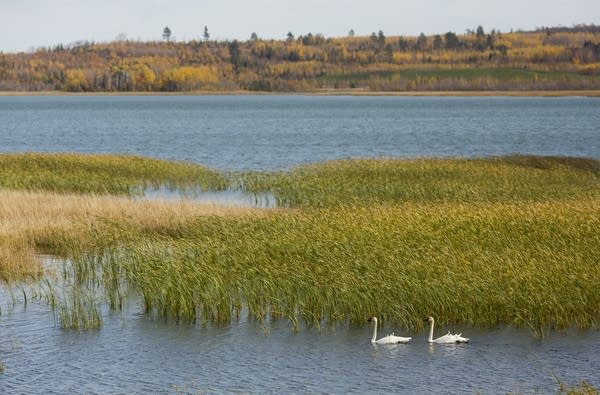Key question in PolyMet mine fight: Whose data to trust?

Swans swim through a man-made lake left behind after mining operations ended at a PolyMet site near Aurora, Minn.
Derek Montgomery | File for MPR News 2012
Go Deeper.
Create an account or log in to save stories.
Like this?
Thanks for liking this story! We have added it to a list of your favorite stories.


